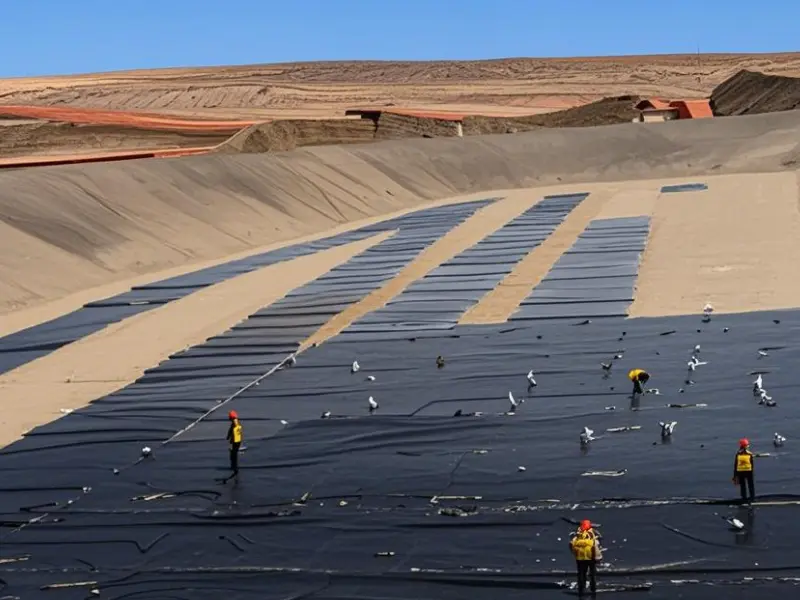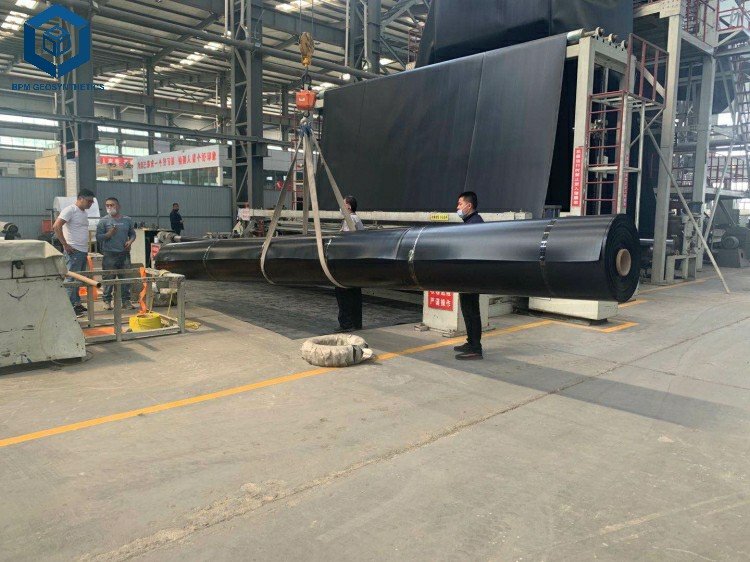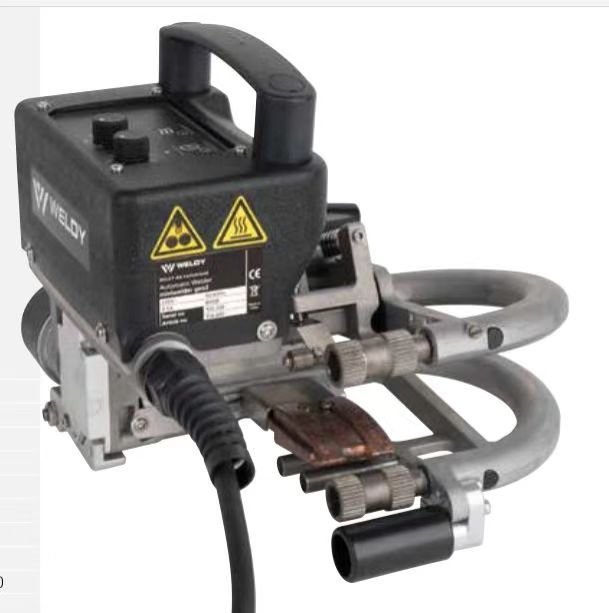Creating a serene and functional pond—whether for koi, goldfish, or aesthetic appeal—relies heavily on choosing the right liner. Rubber pond liners, particularly those made from HDPE, have long been a popular choice among pond builders due to their flexibility and fish-safe properties. Renowned pond liner manufacturers like BPM Geosynthetics produce these geo liners with specifications such as 45-mil thickness and 300% elongation, promising durability and adaptability. However, despite their widespread use, rubber pond liners come with notable disadvantages that can impact installation, maintenance, and long-term performance.
At BPM Geosynthetics, with over 15 years of experience supplying liners globally, we’ve observed both the strengths and limitations of rubber pond liners in real-world applications—such as a 300,000 m² project in Sri Lanka. This blog post delves into the key drawbacks of rubber pond liners, offering detailed insights to help pond owners, landscapers, and aquaculture professionals make informed decisions. From weight challenges to puncture risks, we’ll explore why an EPDM pond liner might not always be the ideal solution and suggest alternatives where applicable. Let’s uncover the hidden pitfalls of this common pond lining material.
1. Introduction to Rubber Pond Liners
Rubber pond liners are synthetic geomembranes, typically made from HDPE or butyl rubber, designed to create a watertight barrier in ponds. Known for their flexibility (up to 300% elongation, ASTM D412) and UV resistance (90% retention after 1,500 hours, ASTM G154), they are favored for small-to-medium ponds (100–10,000 m²) and complex shapes. These liners are often marketed as durable, with lifespans of 50–70 years when installed correctly, and are produced by leading pond liner manufacturers like BPM Geosynthetics in rolls up to 15m x 30m.
However, while rubber pond liners excel in adaptability, they harbor disadvantages that can complicate pond projects. Understanding these limitations—such as installation challenges and susceptibility to damage—is crucial for balancing cost, performance, and longevity. Below, we break down the key drawbacks to guide your decision-making process.

2. Key Disadvantages of Rubber Pond Liners
2.1 High Weight Makes Handling Difficult
Challenge of Transport and Installation
One of the most significant disadvantages of a rubber pond liner is its weight. An EPDM pond liner typically weighs 0.9–1.2 kg/m² (45-mil thickness), making it far heavier than alternatives like Reinforced Polyethylene (RPE) at 0.3–0.4 kg/m². For a 1,000 m² pond, this translates to 900–1,200 kg of material—unmanageable without machinery or a team. Shipping costs rise accordingly, often adding $100–$300 for medium ponds, while on-site handling requires extra labor, increasing installation expenses by 15–20% (industry feedback).
Practical Implications
In contrast, RPE liners can be shipped in single panels up to 5,574 m² due to their lighter weight, reducing seams and labor. For rubber pond liners, large-scale projects (e.g., 30,000 m²) often necessitate multiple rolls, complicating logistics and raising costs by $500–$1,000 compared to lighter options (BPM case studies). This weight disadvantage limits DIY feasibility, pushing reliance on professional installers.
2.2 Lower Puncture Resistance Increases Vulnerability
Susceptibility to Damage
Rubber pond liners, despite their flexibility, lack the puncture resistance of alternatives. EPDM offers 300 N resistance (ASTM D4833), while RPE boasts 600–800 N—2–3 times stronger. Sharp objects like rocks, roots, or even fishhooks can pierce a rubber pond liner, especially without underlayment. In a typical pond base with stones <1” diameter, puncture risk rises by 10–15% without protection (Geosynthetics Magazine, 2025).
Costly Underlayment Requirement
To mitigate this, pond liner manufacturers recommend geotextile underlayment (300 g/m², $0.20–$0.50/m²), adding $200–$500 to a 1,000 m² project (Webb’s Water Gardens). This extra layer boosts puncture resistance by 300–400%, but it negates the rubber pond liner’s initial cost advantage ($0.80–$1.20/m² vs. RPE’s $0.90–$1.30/m²), pushing total expenses closer to $1.00–$1.70/m².
2.3 Limited Seam Strength and Installation Complexity
Seam Weakness
Unlike RPE or HDPE, which can be heat-welded into seamless panels (13 kN/m strength, ASTM D6392), rubber pond liners rely on butyl tape or adhesive for seams. These joints achieve only 8–10 kN/m strength, increasing leak risk by 5–10% over time. For large ponds (>5,000 m²), multiple seams amplify this vulnerability, with field studies showing 10–15% failure rates due to poor bonding (industry reports).
Installation Challenges
Installing a rubber pond liner demands precision—folds and pleats form naturally due to its flexibility, requiring careful adjustment to avoid weak points. Without professional welding equipment (unlike HDPE’s factory seams), DIY attempts falter, raising labor costs by $500–$1,000 for a 1,000 m² pond (Ozponds estimates). Box-welded alternatives (e.g., polypropylene) eliminate folds, but EPDM pond liners lack this option, complicating irregular designs.
2.4 Degradation Over Time from Environmental Exposure
UV and Weathering Effects
While rubber pond liners are UV-stabilized, prolonged exposure weakens them. EPDM retains 90% integrity after 1,500 hours (ASTM G154), but in climates like Thailand (2,500 sunshine hours/year), degradation accelerates beyond 10–15 years, reducing lifespan by 20–30% if edges remain exposed (Pond Informer). Covering with soil or gravel adds $0.10–$0.30/m² but alters aesthetics and increases maintenance.
Chemical Breakdown
In ponds with high acidity (pH <5) or fertilizer runoff, rubber pond liners degrade faster—5–10% lifespan reduction (SGS testing). Unlike HDPE’s chemical resistance (pH 2–12), EPDM’s rubber composition reacts subtly, risking micro-cracks over decades. This limits its use in aquaculture or industrial settings, where water chemistry fluctuates.
2.5 Higher Maintenance and Repair Costs
Repair Frequency
Punctures or seam failures in a rubber pond liner demand prompt repair—liner tape kits cost $20–$30 per fix (Webb’s Water Gardens), with 2–3 repairs common over 20 years in rocky soils. For a 1,000 m² pond, this adds $60–$90, plus labor ($50–$100 per incident), totaling $150–$300 long-term. RPE’s higher durability cuts this by 50%.
Maintenance Burden
Folds and pleats trap debris, requiring annual cleaning ($50–$100 for small ponds, Ozponds). Exposed edges need gravel or soil cover to combat UV damage, adding $100–$300 every 5–10 years. These recurring costs erode the rubber pond liner’s affordability edge over alternatives like RPE or HDPE.
2.6 Limited Suitability for Large-Scale Projects
Size Constraints
Rubber pond liners max out at 15m x 30m rolls (450 m²), requiring seams for larger ponds (e.g., 10,000 m² needs 22+ rolls). RPE offers single panels up to 5,574 m², slashing seams and labor by 80%. For a China Ski Jacket-style pivot—where scale matters—this limitation hampers rubber pond liners in commercial aquaculture or reservoirs.
Cost Escalation
A 30,000 m² project with rubber pond liners costs $24,000–$36,000 (at $0.80–$1.20/m²), plus $5,000–$10,000 for installation and underlayment (BPM data). RPE, at $27,000–$39,000, installs faster and cheaper ($3,000–$5,000), offsetting its higher material cost with efficiency.
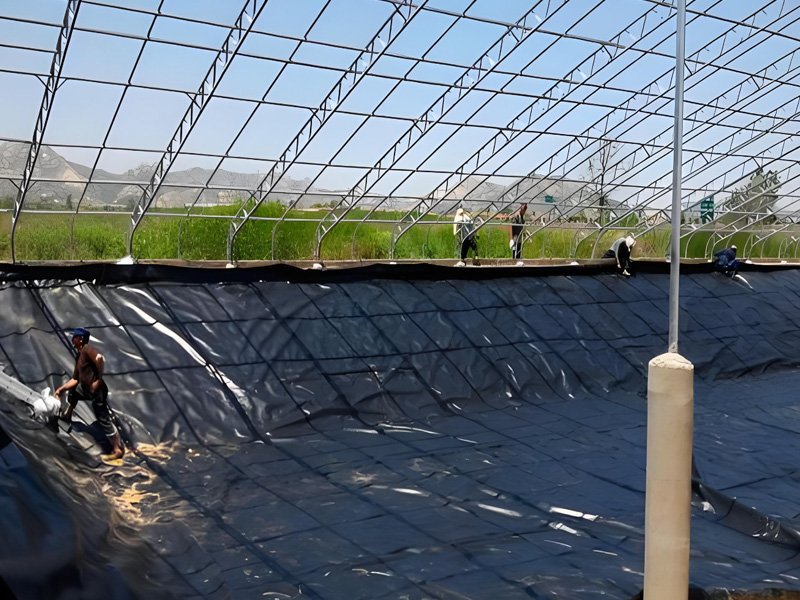
3. Comparing Rubber Pond Liners to Alternatives
3.1 EPDM vs. RPE
- Weight: EPDM (0.9–1.2 kg/m²) vs. RPE (0.3–0.4 kg/m²). RPE is lighter and easier to handle, making it more convenient for installation.
- Puncture Resistance: EPDM (300 N) vs. RPE (600–800 N). RPE offers significantly better puncture resistance, making it more durable.
- Cost: EPDM ($0.80–$1.20/m²) vs. RPE ($0.90–$1.30/m²). While RPE is slightly more expensive, its durability and reduced need for underlayment offset the cost.
3.2 EPDM vs. HDPE
- Flexibility: EPDM (300% elongation) vs. HDPE (700% elongation for LLDPE variants). HDPE is more flexible and can adapt better to irregular shapes.
- Seams: EPDM relies on tape for joining, while HDPE uses welded seams with a strength of up to 13 kN/m. HDPE seams are stronger and more reliable.
- Chemical Resistance: EPDM offers moderate chemical resistance, while HDPE excels in this area, with resistance to a wide pH range (pH 2–12).
EPDM is ideal for smaller, decorative ponds due to its flexibility and ease of installation. RPE is better suited for larger projects where durability and puncture resistance are critical. HDPE is the top choice for industrial applications requiring strong chemical resistance and reliable seams.
2. Mitigating the Disadvantages
4.1 Proper Installation
Use geotextile underlayment and professional installers to cut puncture and seam risks by 15–20% (BPM data). Smooth bases (stones <1”) and overlap seams by 6” with butyl tape enhance durability.
4.2 Regular Maintenance
Inspect annually for tears, cover exposed edges, and clean folds to extend life by 5–10 years (Pond Informer). Add clay additives (e.g., calcium montmorillonite) in koi ponds to mimic natural bottoms, offsetting chemical concerns.
4.3 Choosing Alternatives
For large ponds, opt for RPE or HDPE from pond liner manufacturers like BTL or Geosincere—lighter, tougher, and seam-efficient options reduce long-term costs by 20–30% (industry analysis).
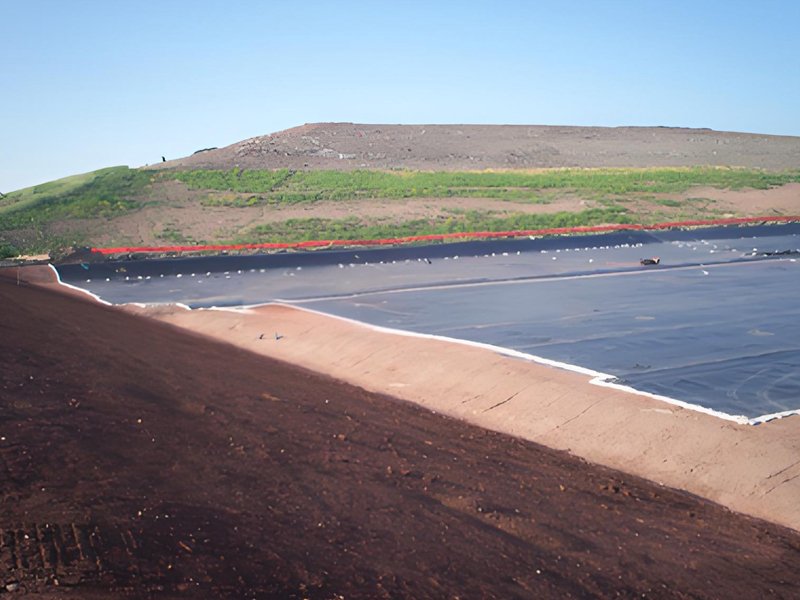
5. Conclusion
Rubber pond liners offer flexibility and fish safety, with specs like 45-mil thickness and 20–30-year lifespans making them appealing for small-to-medium ponds. Yet, their disadvantages—high weight (0.9–1.2 kg/m²), puncture vulnerability (300 N), seam weakness, and environmental degradation—pose significant challenges. For a 1,000 m² pond, costs can escalate from $800–$1,200 to $1,500–$2,000 with underlayment and labor (BPM estimates), while maintenance adds $150–$300 over decades.
If your project demands intricate shapes and a modest budget, an HDPE pond liner remains viable with proper care. For larger or high-traffic ponds, alternatives like RPE or HDPE outperform in durability and efficiency. Weigh your pond’s size, environment, and goals against these drawbacks. Need tailored advice? Contact trusted pond liner manufacturers like BPM Geosynthetics for samples and quotes—your perfect pond starts with the right choice.

